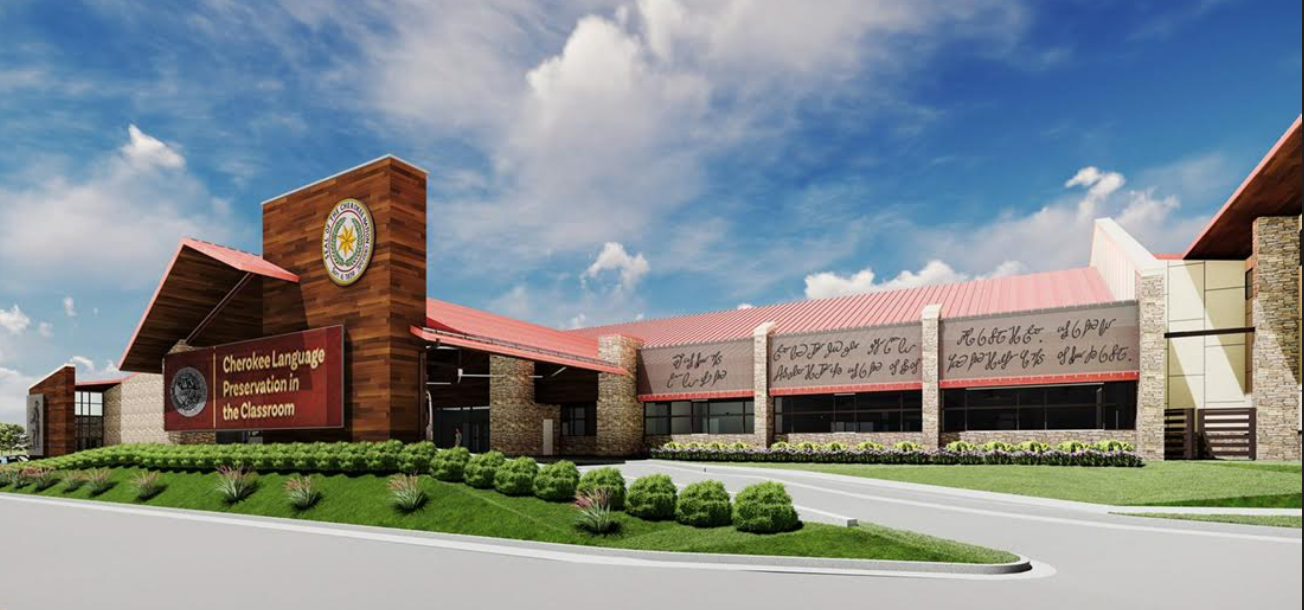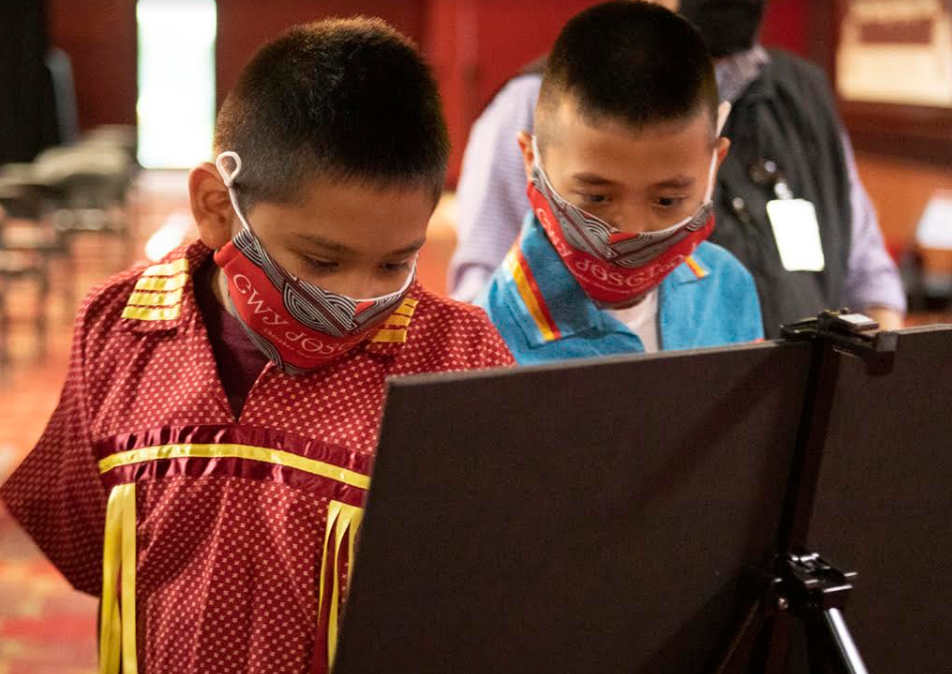
- Details
- By Levi Rickert
TAHLEQUAH, Okla. — In the largest language investment in Cherokee Nation history, the Council of the Cherokee Nation approved legislation introduced by Chief Hoskin and Deputy Chief Warner to provide a $16 million investment in 2019 to construct the Durbin Feeling Language Center.
On Wednesday, ground was broken for the new 50,000-square-foot facility that will house all of the tribe’s language programs under one roof for the first time.
The new language center is named in honor of the late Durbin Feeling, Cherokee Nation’s single-largest contributor to the Cherokee language since Sequoyah.
“Our language and our culture are our link to the past; they are what binds us together today, and the key to remaining a distinct people tomorrow,” Principal Chief Chuck Hoskin Jr. said. “Our culture and by extension, our language, has been tested ever since European contact: war, disease, broken treaties, our forced removal, the suppression of our government, the influence of the so-called ‘civilized’ society around us has all put our culture and our language to the test. We are a strong people, but our lifeways and our language have all been eroded by all of these pressures over the centuries.”

The Durbin Feeling Language Center will house the Cherokee Immersion Charter School, the Cherokee Language Master Apprentice Program, and the Cherokee Nation translation team, along with other programs and services offered through the tribe’s language efforts.
Along with the new Durbin Feeling Language Center, the Cherokee Nation is also building five new efficiency style homes for Cherokee speakers, helping to connect them to younger Cherokee language learners at the nearby language center. The nearby speakers village is named in honor of the late Bonnie Kirk, a beloved Cherokee speaker and Cherokee Immersion School teacher who understood the importance of teaching younger generations to speak the Cherokee language and use it in their daily lives.
It is estimated that there are only about 2,000 fluent Cherokee speakers in the Cherokee Nation.
Construction is expected to be complete in 12 to 18 months.
More Stories Like This
Native News Weekly (August 25, 2024): D.C. BriefsUS Presidents in Their Own Words Concerning American Indians
Ethics Complaint Alleges Former Navajo Nation Chief of Staff Accepted Gifts From Contractor
Monday Morning (December 14, 2025): Articles You May Have Missed This Past Weekend
Native News Weekly (December 14, 2025): D.C. Briefs
Help us defend tribal sovereignty.
At Native News Online, our mission is rooted in telling the stories that strengthen sovereignty and uplift Indigenous voices — not just at year’s end, but every single day.
Because of your generosity last year, we were able to keep our reporters on the ground in tribal communities, at national gatherings and in the halls of Congress — covering the issues that matter most to Indian Country: sovereignty, culture, education, health and economic opportunity.
That support sustained us through a tough year in 2025. Now, as we look to the year ahead, we need your help right now to ensure warrior journalism remains strong — reporting that defends tribal sovereignty, amplifies Native truth, and holds power accountable.
 The stakes couldn't be higher. Your support keeps Native voices heard, Native stories told and Native sovereignty defended.
The stakes couldn't be higher. Your support keeps Native voices heard, Native stories told and Native sovereignty defended.
Stand with Warrior Journalism today.
Levi Rickert (Potawatomi), Editor & Publisher

